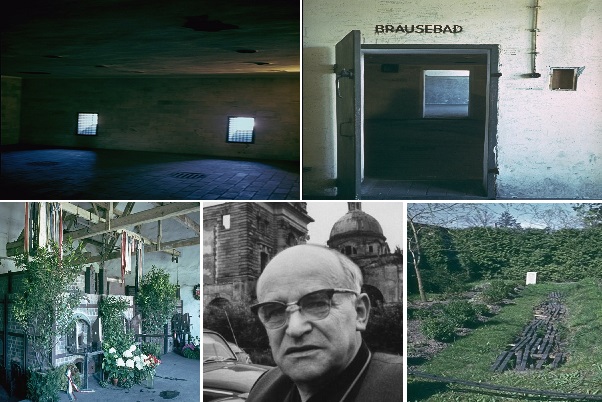
No one knows exactly why Hugo Jaeger, one of Hitler’s official photographers, came back to Dachau five years after it was liberated by US troops just to take pictures of its empty buildings. But the eerie pictures he took and he himself, a man admired so little by many, were enough to give anyone the chills.
The works of Hugo Jaeger was extolled by the Fuehrer himself as the future of photography. The man himself had been a zealous fascist even before the Nazis rose in power.
Hugo Jaeger had always been on hand to capture the moments during Hitler’s rallies. He also glorified the Third Reichand even took candid shots of the German dictator during special occasions like birthdays.
After the Fuehrer killed himself and Germany fell, he went on to hide his photographs in metal jars and buried them in various locations around Munich. As Time reported, he dug them out periodically to check and dry them out.
There were even a number of reports which stated that when the Americans came to investigate the house he was staying in, he addled them up by offering a bottle of brandy to stop them from going through a bag where he hid his photographs. He then went on to bury them.
he even moved his works from being buried to a Swiss bank vault in what looked like a desperate measure to preserve the photos he had taken on the cause which he strongly supported.
Hugo Jaeger may have documented some of the key points in the rise of the Nazis and Hitler but his return to Dachau five years after it was liberated is still a puzzle. Why was he pushed to take pictures of the empty buildings that time?
His Dachau images showed the already deserted barracks, the decaying crematorium and the ghostly gas chambers which were constructed to appear as shower rooms with the German word for shower – Brausebad – painted on top of their doorways.
he even took pictures of the watch towers and the prayer scarves and wreaths laid in memory of the cremated prisoners and 4,000 soldiers of the Soviet Army killed by firing squads there.
His huge archive of photographs – chronicling Hitler’s rise and fall – were eventually sold in 1965 to Life magazine. Life did publish them but an editor’s note divulged their source – that the some 2,000 photographs had come from the hands of the man the magazine’s team and most of the world had little admiration towards.
According to Time, when Hugo Jaeger returned to take his Dachau images, the camp had been occupied with refugees left homeless by the war brought about by the party he strongly supported.
The Dachau concentration camp had been the prison house of some 188,000 plus political prisoners comprised of Jews as well as other groups. It was first and foremost a labor camp but like Auschwitz, had also been used to try on the Nazis’ penchant for medical experiments.
When American troops drew close to the camp in April 1945, Nazi soldiers serving as camp guards did their final deed of inhumanity. They forced over diseased and frail 7,000 prisoners, comprised mostly of Jews, on a death march. When the weak and starving captives struggled to keep up with the walk, they were immediately shot. Those who survived were freed by the Allies In May.
The images Hugo Jaeger took of Dachau were colored yet they could not hide the bleakness of the buildings and they did not fail to raise the fears of those who look at them. Tens of thousands of lives had been lost during the Holocaust and throughout WWII within its walls.